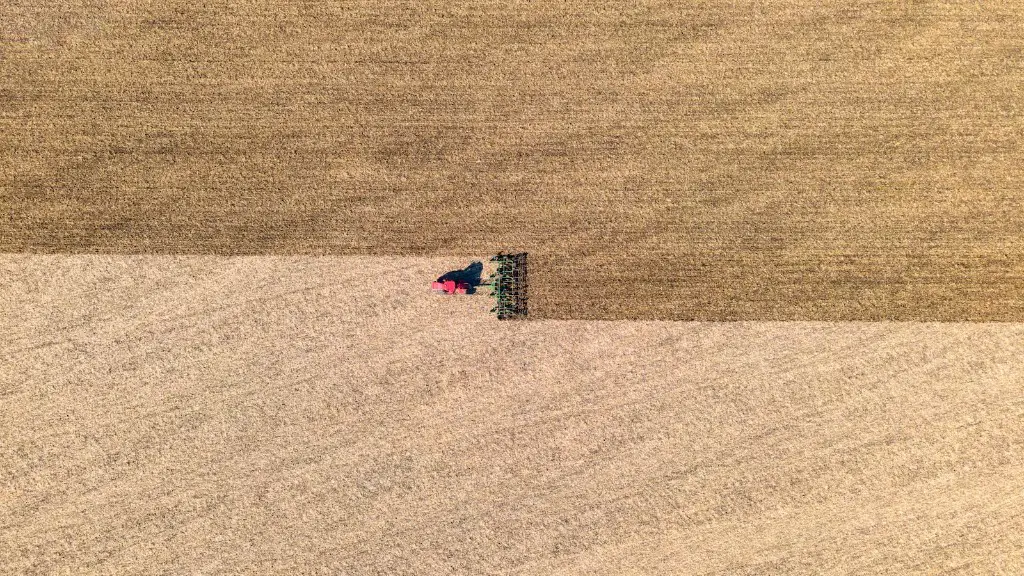As the human population continues to grow, the demand for food will increase. To meet this demand in a sustainable way, we need to support sustainable agriculture. Sustainable agriculture is an approach to farming that seeks to minimize the impact on the environment while maximizing the efficiency of production. This can be done through a variety of methods, including using less water, reducing chemical inputs, and increasing biodiversity. By supporting sustainable agriculture, we can ensure that our food supply is both environmentally friendly and sufficient to meet the needs of a growing population.
Practicing sustainable agriculture means using farming techniques that protect the environment, conserve natural resources, and support the health and well-being of farmers, workers, and consumers. To achieve these goals, farmers implement a variety of sustainable practices, including:
• Crop rotation: Planting different crops in a field in successive years to improve soil health and reduce the need for chemical inputs.
• Cover crops: Planting cover crops like legumes or grasses between cash crops to improve soil fertility, reduce erosion, and suppress weeds.
• Conservation tillage: Minimizing soil disturbance through techniques like no-tillage or low-tillage farming, which reduces soil erosion and increases soil health.
• Integrated pest management: Using a combination of techniques to manage pests, including preventive measures like crop rotations and biological controls, to reduce the need for chemical pesticides.
• Water conservation: Implementing irrigation techniques and water-use strategies that reduce water waste and conserve this vital resource.
• Energy efficiency: Using energy-efficient equipment and practices to reduce the greenhouse gas emissions associated with farming.
What are the 3 main components of sustainable agriculture?
The basic goals of sustainable agriculture are to produce food and fiber in an environmentally and socially responsible manner. This includes protecting and improving the natural resources upon which agriculture depends, such as soil, water, and biodiversity. It also includes ensuring the economic viability of agriculture and the well-being of farmers and other agriculture workers.
Sustainable agriculture practices are those that are designed to protect and conserve natural resources while still being productive. This means reducing food waste, minimizing air, water, and climate pollution, promoting biodiversity, and enhancing quality of life for farm families and communities. All of these practices are essential for ensuring that our food system is sustainable in the long term.
How can individuals promote sustainability in the food system
The sustainable food movement is a response to the negative environmental and social impacts of the industrial food system. The goal of the sustainable food movement is to create a food system that is environmentally sustainable, socially just, and economically viable.
One way to support the sustainable food movement is to choose Fair Trade foods. Fair Trade certification is a voluntary program that sets standards for how farmers and workers are treated, and ensures that they receive a fair price for their products. When you choose Fair Trade foods, you are supporting farmers and workers who are working to create a more sustainable food system.
Another way to support the sustainable food movement is to reduce your meat intake or try a vegetarian or vegan diet. Animal agriculture is a major contributor to climate change, and it also has negative impacts on the environment and animal welfare. By reducing your meat intake or choosing plant-based foods, you can help create a more sustainable food system.
Many climate advocates say that the most cost-effective way to help the climate through agriculture is to farm less land and raise less livestock. That means persuading farmers not to convert grasslands or other carbon-rich lands to row crops such as corn and soybeans.
What are the 5 ideas to create a sustainable farm?
A healthy environment is essential for sustaining life. Sourcing organic food is one way to reduce our impact on the environment and create a healthier world. Reducing food waste is another way to create a healthier world. constructing a circular economy is a third way to create a healthier world. Building a relationship with consumers & community is a fourth way to create a healthier world. Equity for workers is a fifth way to create a healthier world.
The use of chemical fertilizers and pesticides has been a controversial topic for many years. Some believe that they are essential for modern agriculture, while others believe that they are harmful to the environment. There is a lot of scientific evidence that suggests that the use of these chemicals can have a negative impact on both soil and water sources. The rise of Agtech, combined with traditional, local knowledge, could help increase yield in a less damaging way.
What are the four ideas of sustainable agriculture?
Sustainable agriculture is a type of agriculture that focuses on producing food in a way that is environmentally friendly and does not have a negative impact on the surrounding ecosystem. This can involve using organic methods to grow crops and raise animals, as well as using strategies like crop rotation and permaculture to minimize the impact of agriculture on the environment.
The objective of sustainable agriculture is to meet society’s food and textile needs in the present, without compromising the ability of future generations to meet their own needs. It is therefore important to protect and enhance the environment and natural resources, whilst also ensuring that farming operations are economically viable and farmers are sufficiently rewarded for their work. This will contribute to the well-being of the community as a whole and help to produce sufficient quantities of high-quality, safe food.
How can we promote agriculture
There are many different priority sectors that can help to improve the stability of the agricultural sector. Some of these include investing in agricultural development that promotes area-based development, providing priority to investments that can increase and sustain productivity, and ensuring effective irrigation systems and efficient transport infrastructure. By investing in these and other priority sectors, it is possible to help improve the stability and long-term viability of the agricultural sector.
Nowadays, with the increasing awareness of climate change and its effects on the environment, it is more important than ever to think about the things we buy and how they impact the planet. Here are some things to keep in mind the next time you go shopping:
1. Make sure your big purchases have big environmental benefits. For example, choosing an energy-efficient appliance can save you money in the long run and help reduce your carbon footprint.
2. Go #PlasticFree whenever possible. Avoid products that are packaged in plastic, as this material takes centuries to break down and is a major contributor to pollution.
3. Boycott products that endanger wildlife. For example, products made from ivory or fur contribute to the decline of endangered species.
4. Pay attention to labels. Look for items that are certified organic or fair trade, which indicates that the product was produced in an environmentally-friendly way.
5. Be water wise. Save water by making small changes in your daily routine, such as turning the faucet off while brushing your teeth.
6. Drive less, drive green. Whenever possible, walk, bike, or take public transportation instead of driving. If you must drive, choose a fuel-
How can we promote sustainability?
To promote sustainability, individuals can take steps to conserve energy in their homes. This includes turning off lights, computers, TVs, radios and appliances when they are not in use. Additionally, setting the thermostat a few degrees lower in winter and a few degrees higher in summer can make a difference. Finally, taking shorter showers and shutting off the water while brushing teeth are also ways to conserve water.
In order to encourage people to live more sustainable lifestyles, it is important to equip them with the right knowledge. People need to know both why an action is important and how to do it. Help people process information by leveraging the leaders and making actions easy and enjoyable. Allow participation and take one step at a time. Pause rewards along the way to keep people motivated.
How do we reduce the impacts of agriculture on the environment
Climate change is expected to bring more extreme weather conditions, including more droughts and more erratic rainfall. This means that it is more important than ever to have healthy soils, plants, and animals.
Regenerative agriculture practices can help improve the health of all three, and make them more resilient to climate change. These practices include no-till cultivation, not burning stubbles, and planting cover crops.
By ensuring that our soils, plants, and animals are as healthy as possible, we can help them withstand the challenges of climate change.
Complementary support refers to using a combination of policy instruments to achieve a desired outcome. This is often more effective than using a single policy approach. For example, providing technical assistance to farmers can make adopting new farming practices more accessible and sustainable. This type of support can help farmers to increase productivity and incomes, while also improving the environment.
What are some ways to reduce the environmental impact of agriculture?
No-tillage systems, crop rotations, and cover crops all help to reduce the amount of carbon dioxide released into the atmosphere. They also help to capture the excess carbon dioxide that is generated by other industries. Reintegrating livestock into crop production systems helps to improve the soil’s ability to sequester carbon.
It is our responsibility to protect the Earth that we all call home. By taking simple steps to reduce, reuse, and recycle, we can all make a difference. Consider volunteering for local cleanups or educating others about ways to conserve resources. Sustainable practices, such as using long-lasting light bulbs and shopping wisely, can also help protect our planet. Finally, planting trees is a great way to help offset our impact on the environment. Together, we can make a difference for the Earth.
Warp Up
There are a number of ways to support sustainable agriculture:
1. Choose products that are grown using sustainable methods.
2. Advocate for policies that support sustainable agriculture.
3. Support farmers and businesses that are committed to sustainable agriculture.
4. Educate yourself and others about the benefits of sustainable agriculture.
5. Invest in projects that promote sustainable agriculture.
A major way to support sustainable agriculture is to buy local and organic products. When you buy locally, you are supporting farmers in your area and getting fresher products. Organic farming uses less energy and resources, so it is more sustainable. You can also support sustainable agriculture by volunteering on a farm or at a farmers market. Another way to support sustainable agriculture is to donate to a nonprofit that is working to create a more sustainable food system.





